Automobiles required a source of power. At first, automobiles were powered by diesel fuel, steam, or electric engines. By the 1910s, most cars ran on gasoline. Drivers had to be able obtain gasoline in cities or along the highways if automobiles were to prove practical.
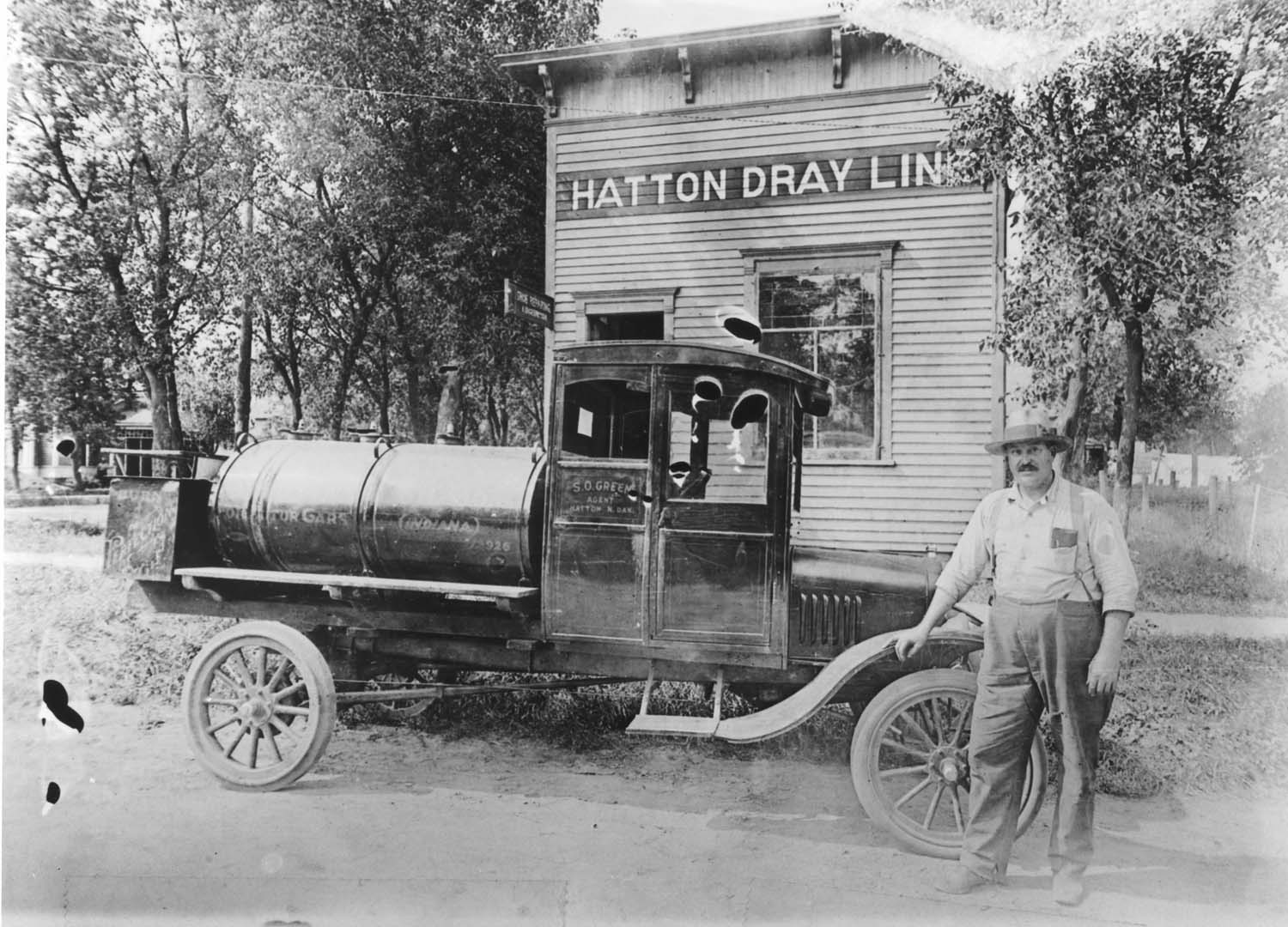
The design of early cars did not include a fuel gauge. (See Document 10.) Drivers listened to the sound of fuel running into the tank; when it sounded full, they stopped adding gas. The earliest sources of gasoline were either a livery (a place where horses or cars could be rented) or a blacksmith shop. The driver or attendant poured gas into a five-gallon can and then poured the fuel into the car’s fuel tank. (See Image 23.) Many drivers filled fuel cans and tied them to the running boards on their cars. That strategy helped them travel between towns.
Document 10: Out of Gas
The Nelson County Observer newspaper of Lakota printed the following story on July 13, 1906. “A young and budding chauffeur the other day had his machine stand stock still in front of P. Quinn’s little ‘cottage,’ and he coaxed it every way he could think of, big beads of sweat rolling from his noble brow. Finally [S.A.] Floren hove in sight, inquired what was the matter, jumped off his machine, gave it a few turns – no go. Happy thot, Mr. Floren poured in some gasoline, when lo and behold, away it went. ‘You blanket blank d. f. the auto is all right. . .’ Moral: Be sure your gasoline is “wet” if you have to light a match to find out.”
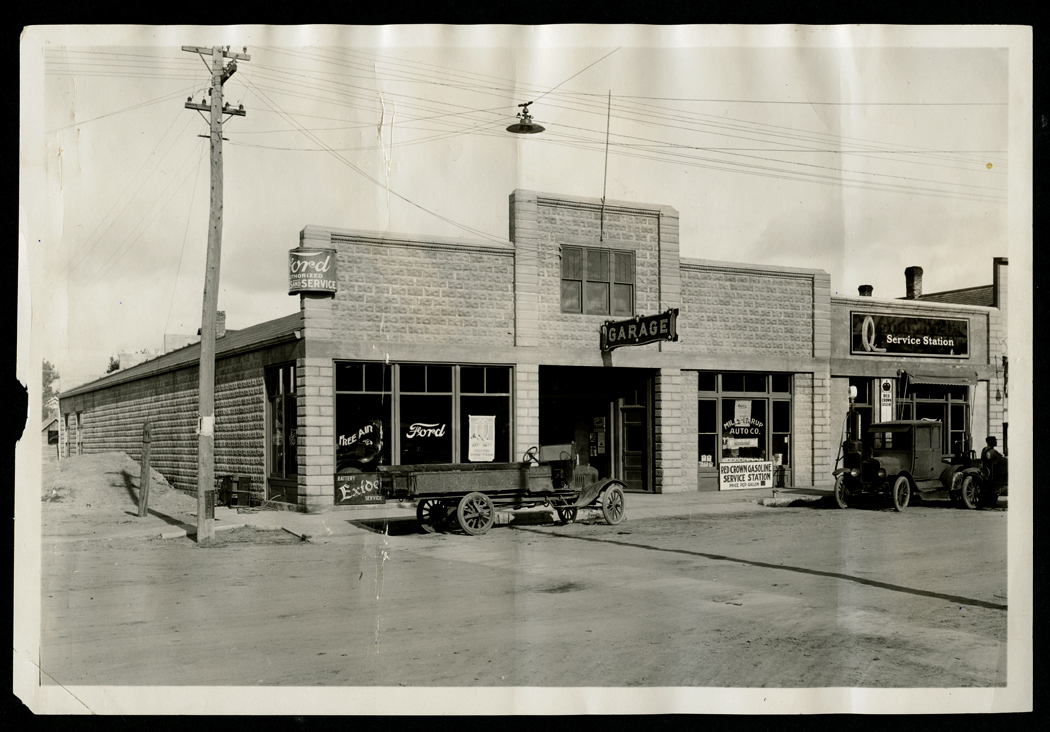
Practical gasoline pumps were in use by 1910 and by the 1920s many different companies produced gasoline pumps. Pumps were safer for filling fuel tanks and allowed drivers to measure the amount of fuel purchased. Drivers now could purchase gasoline at grocery markets, hardware stores, and automobile sales centers. (See Image 24.) The price of gasoline (and other supplies for cars) varied over the years. In 1915, motorists could purchase gas in a city for around 20 cents per gallon ($4.61 today). The price was usually a little higher in small towns. By the 1920s, the sale of gasoline was organized into specialized locations known as gas or filling stations. Drivers looked for familiar gasoline brands, such as Standard Oil or Texaco. As gasoline companies entered into competition for drivers’ dollars, they also offered automobile services. Service station attendants washed windshields, checked oil and water levels, and changed flat tires. (See Image 25.) Some service stations also offered automobile maintenance and repair services. Attendants wore snappy uniforms with the logo of the company they worked for on their shirts and caps.
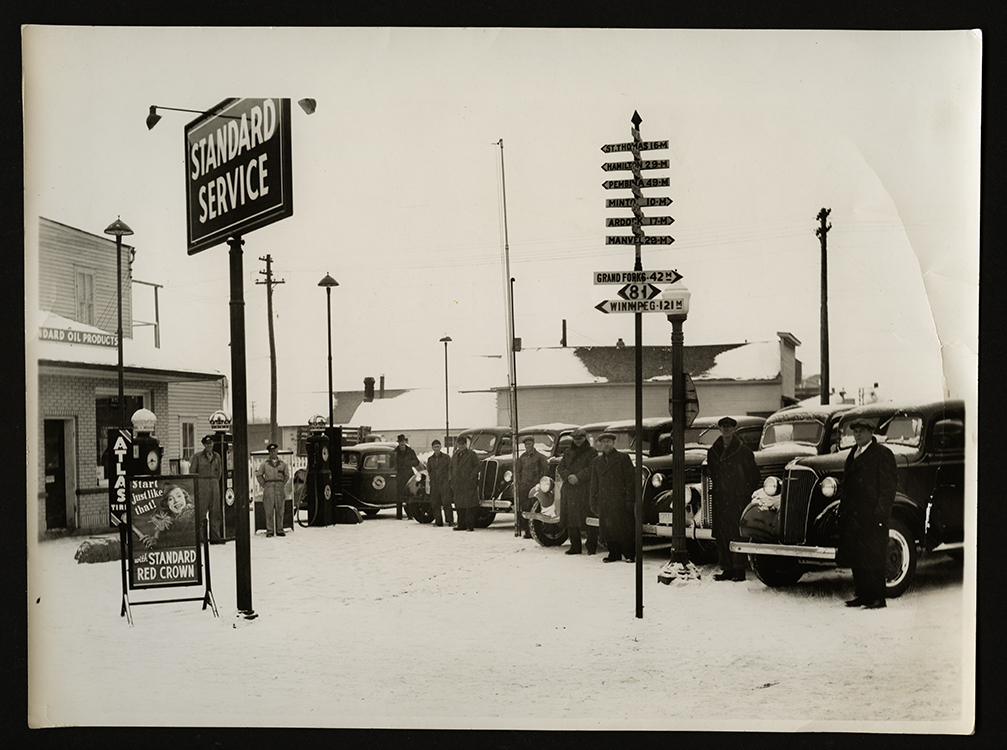
Motorists planned regular stops at well-known service stations such as Taubert'sMax Taubert was the proprietor of Taubert’s Brick House gas station. Every time the mechanic at Taubert’s changed the oil in a car or truck, the can was thrown into a pile enclosed by chicken wire that surrounded the base of a windmill tower. Over the years the can pile reached a height of nearly 50 feet. The pile is a little crooked; Casselton residents claim the tower was struck by a tornado which caused it to tilt. The Casselton Can Pile eventually became a tourist attraction and still stands in Casselton Brick House on U.S. Highway 10 in Casselton or Molly’s Service Station in downtown Bismarck. (See Image 26.) Taubert’s had a lunch counter where travelers could eat after filling their fuel tank. Molly’s offered full automotive service and parking while customers completed their shopping.
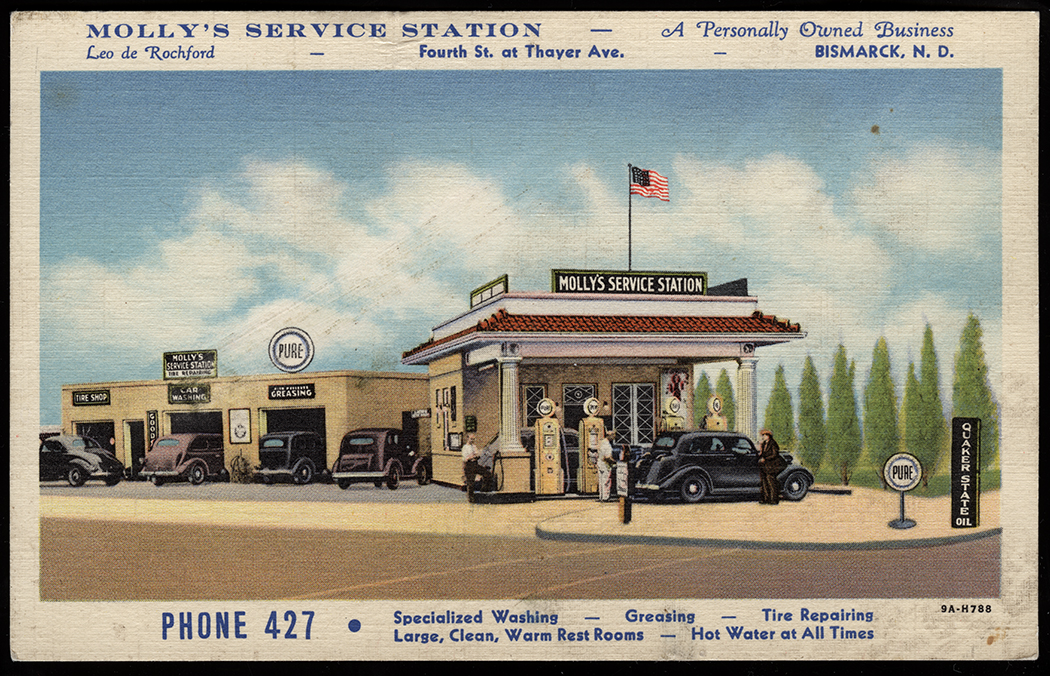
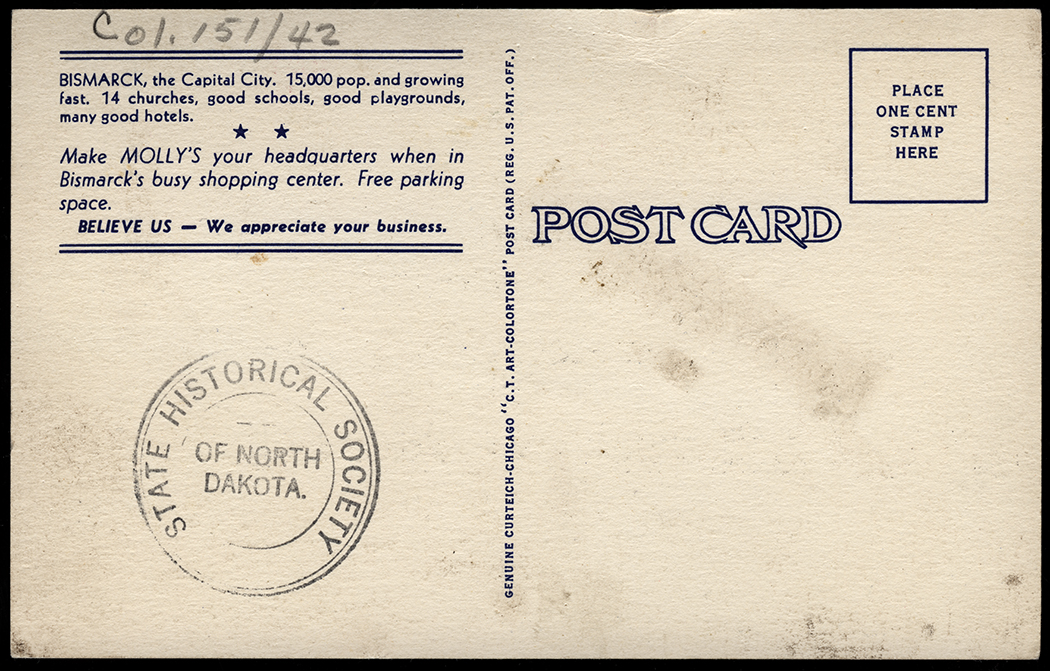
As gas stations modernized, they became safer. (See Image 27.) The gas pumps were moved back from the edge of the street so that cars were not likely to crash into them. Fuel storage tanks were placed underground to limit the possibility of a disastrous fire. Motorists could use pumps to fill their tanks instead of fuel cans. Within a few years after people began to buy automobiles, there was a filling station in every town. (See Image 28.)
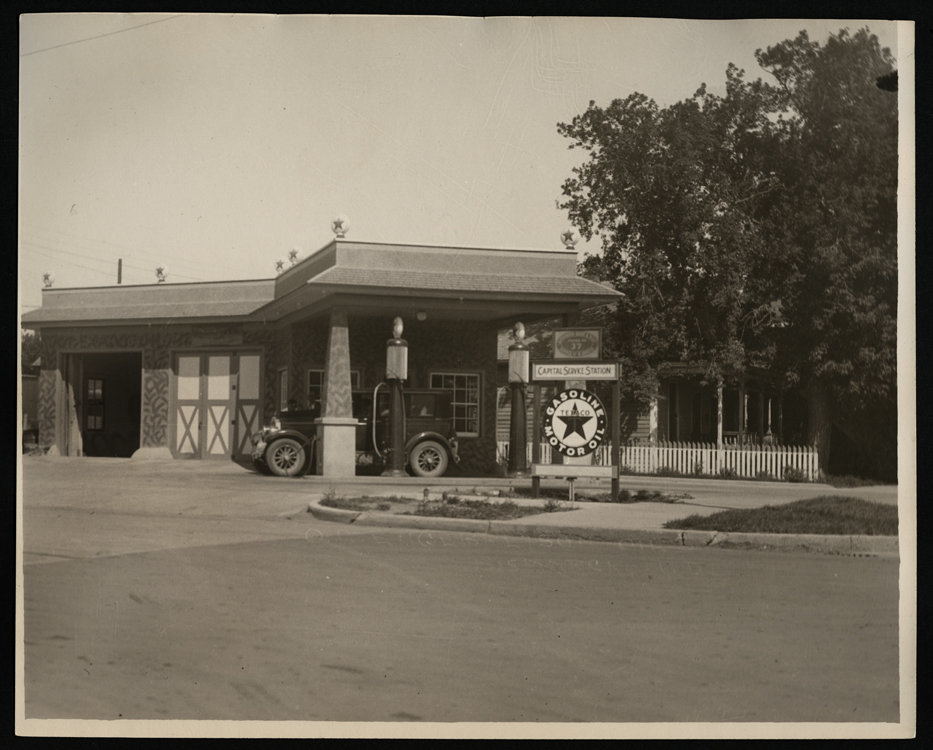
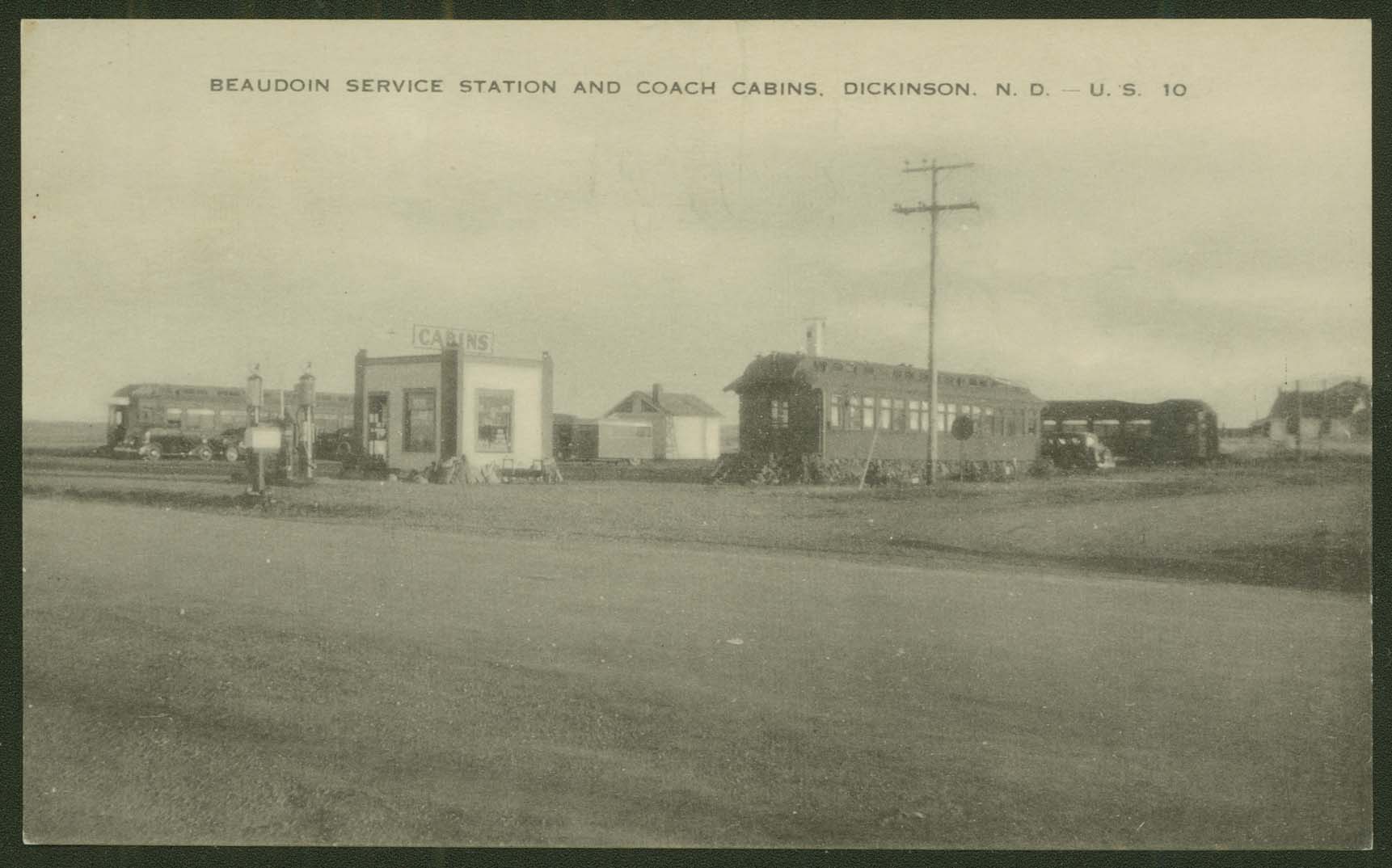
Why is this important? The value of automobiles was recognized very quickly, even by people who were not interested in paying for a car or paying taxes for road maintenance. But, cars would not go anywhere without adequate sources of gasoline. Cars brought more business to towns, and cars also created new jobs and business opportunities all over North Dakota.


